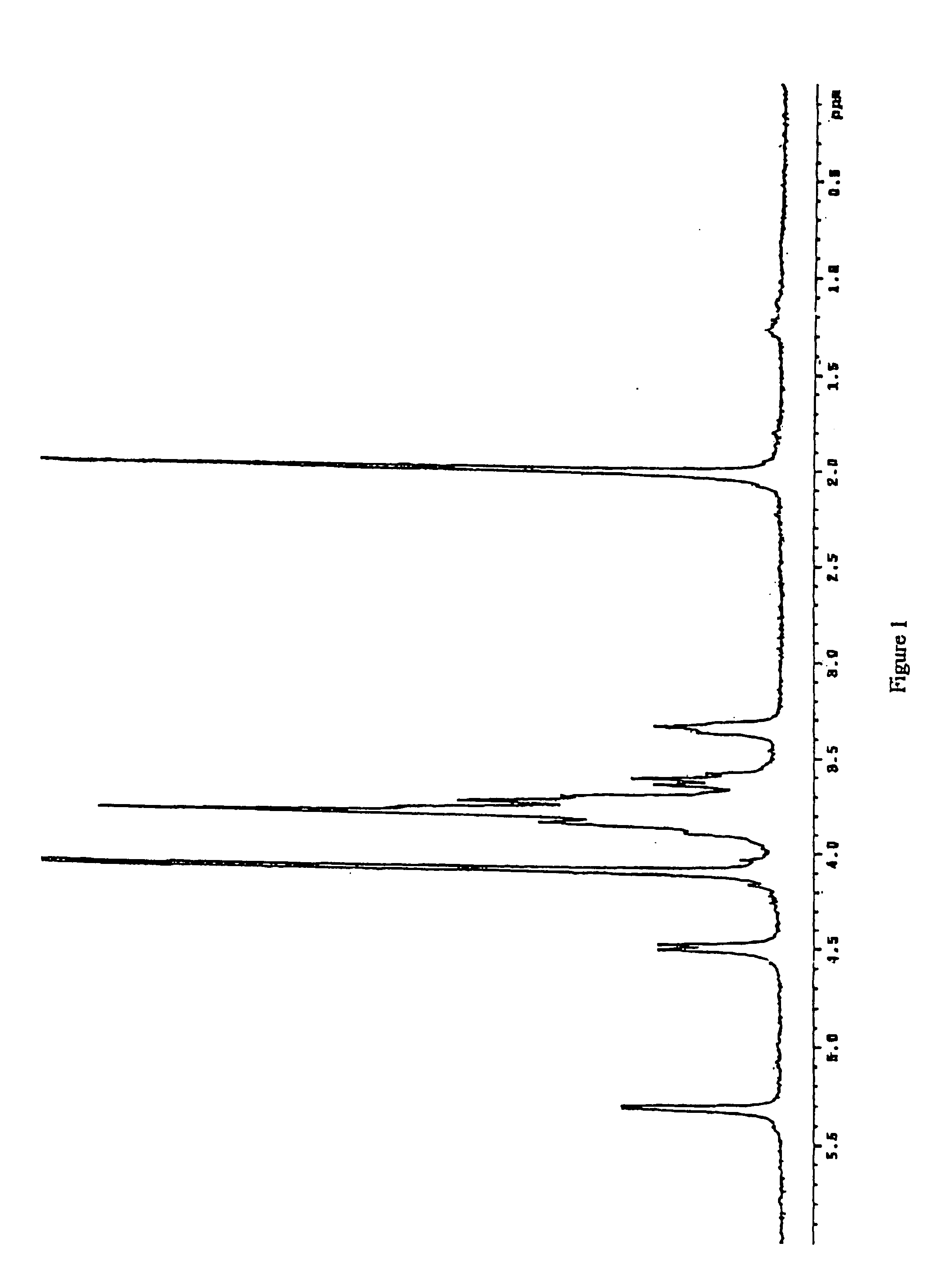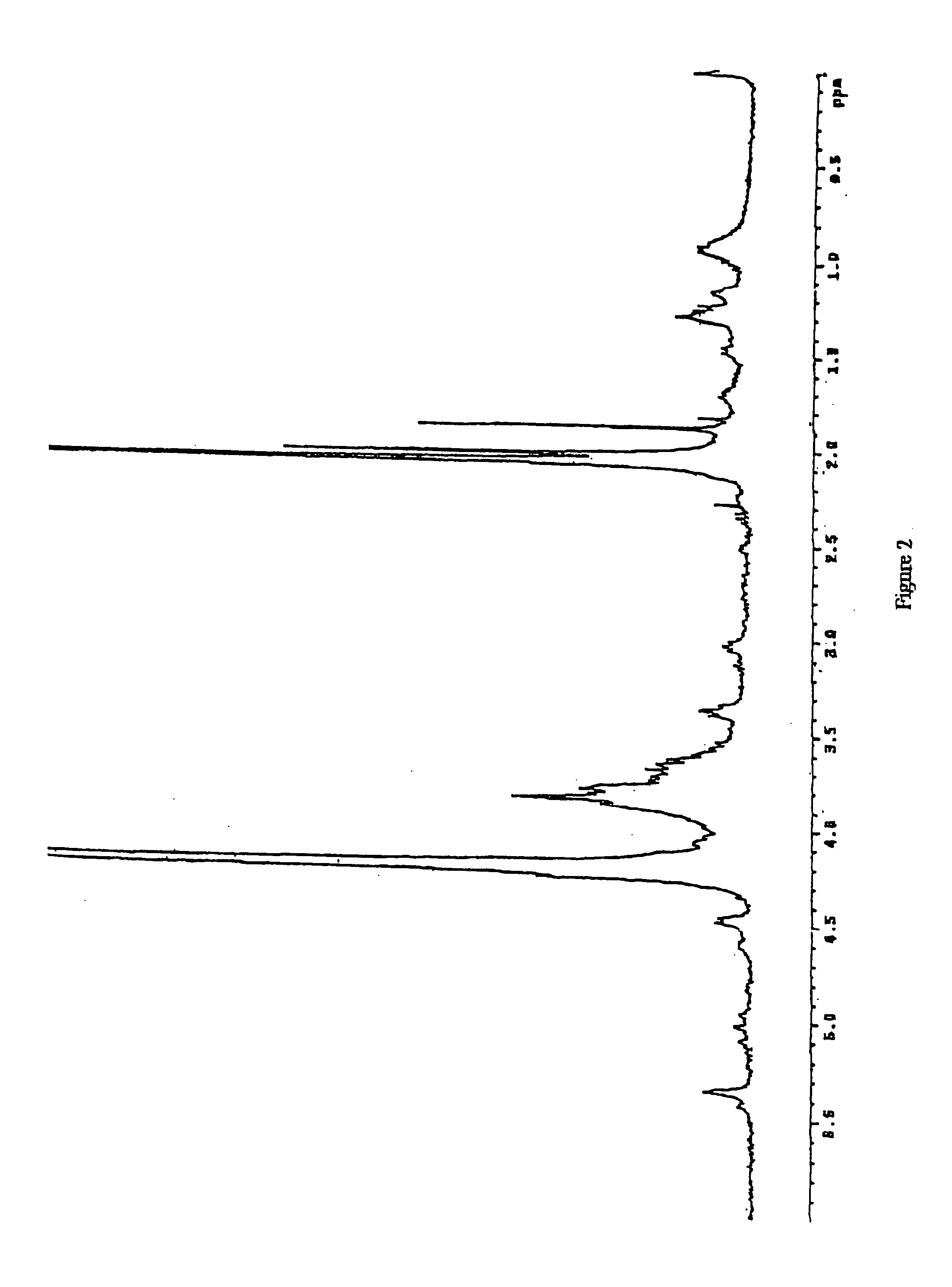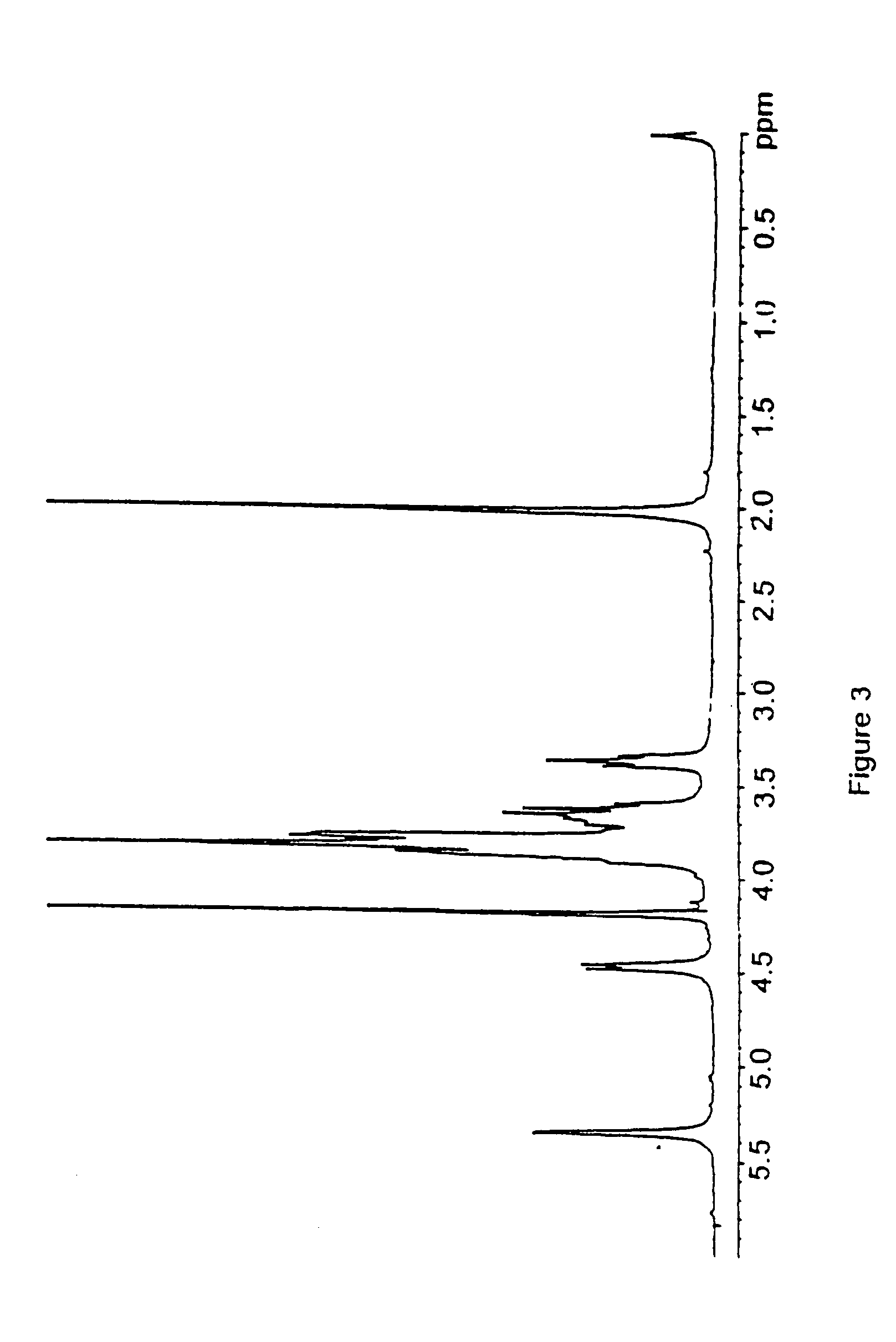Glycosaminoglycans derived from K5 polysaccharide having high anticoagulant and antithrombotic activities and process for their preparation
a polysaccharide and glycosaminoglycan technology, applied in the field of glycosaminoglycans, can solve the problems of loss, o-sulfate group loss, loss, etc., and achieve the effects of improving antithrombin activity, low bleeding risk, and high antithrombin activity
- Summary
- Abstract
- Description
- Claims
- Application Information
AI Technical Summary
Benefits of technology
Problems solved by technology
Method used
Image
Examples
example 1
[0215] Example 1 is performed according to the following steps:
[0216] 10 g of polysaccharide obtained by fermentation as described in the Italian patent application MI99A001465 (WO 01 / 02597) with a purity of 80% (FIG. 2) are dissolved in deionized water to obtain a 1% solution. Triton X-100 is added to reach a concentration of 5% and the solution is kept at 55° C. for 2 hours under stirring. The solution is brought to 75° C. and kept at this temperature till a homogeneous turbid system is obtained and then the solution is rapidly cooled to room temperature. During the cooling two phases are formed. Said thermic treatment is repeated twice on the upper phase (organic phase). The aqueous phase containing K5 is finally 1 / 10 concentrated under reduced pressure and precipitated with acetone or ethanol. The organic phase is discarded.
[0217] The product obtained is K5 polysaccharide with 90% purity detected by proton NMR (FIG. 3) compared to the spectrum of the working standard (FIG. 1)....
example 2
[0239] Example 1 was repeated but in step (c) the immobilized enzyme C5 epimerase extracted from murine mastocytoma was used as described by Jacobsson et al. J. Biol. Chem. 254 2975-2982 (1979), in a buffer containing 40 mM CaCl2 pH 7.4.
[0240] The product obtained has a ratio iduronic acid / glucuronic acid of 59.5:40.5 and the characteristics described in table 2, line 4.
example 3
[0241] Example 1 was repeated but in step (c) the immobilized enzyme C5 epimerase extracted from bovine liver was used as described in WO96 / 14425 with a reaction buffer at pH 7.4 and reaction time of 32 hours. Moreover in step (e) the reaction time was 4 hours.
[0242] The product obtained has a ratio iduronic acid / glucuronic acid of 55.4:44.6 and the characteristics described in table 2, line 5.
PUM
| Property | Measurement | Unit |
|---|---|---|
| temperature | aaaaa | aaaaa |
| temperature | aaaaa | aaaaa |
| flow rate | aaaaa | aaaaa |
Abstract
Description
Claims
Application Information
 Login to View More
Login to View More - R&D
- Intellectual Property
- Life Sciences
- Materials
- Tech Scout
- Unparalleled Data Quality
- Higher Quality Content
- 60% Fewer Hallucinations
Browse by: Latest US Patents, China's latest patents, Technical Efficacy Thesaurus, Application Domain, Technology Topic, Popular Technical Reports.
© 2025 PatSnap. All rights reserved.Legal|Privacy policy|Modern Slavery Act Transparency Statement|Sitemap|About US| Contact US: help@patsnap.com



